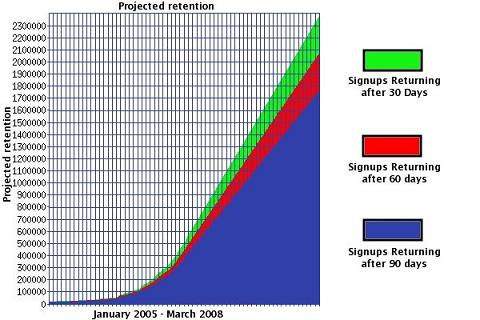Fermer la gueule des sceptiques de Second Life
Dans une passionnante interview du premier journaliste « embeded » dans Second Life, Wagner James, faite par Henry Jenkins du MIT Media Lab (et ici), les arguments permettant de fermer, la gueule, des sceptiques de Second Life, sont exposé.
The real story, he says:
involves all the grassroots user-created content which is merging the world with the broader web, creating a more robust world in a roleplaying sense, while also evolving it into a platform for real world applications. That’s the main story, in my opinion, the one I try to tell on New Worlds Notes, and the one which accounts for Second Life’s consistent, steady growth. It’s not a function of media and corporate interest.
Is there a tension between the corporate colonization of Second Life and the “gift economy” which underlies a vision of the space as a new kind of participatory culture?For the most part, there is no tension, because the native participatory culture hardly knows the corporations are even there, or care all that much that they are. Residents have scant or limited interest in their “colonization”, which is a strong word for what’s really going on: big name brands on dozens of private islands that few visit for any extended period of time. Consistently, grassroots, user-created events and sites are far more popular.
Il lui parle aussi du fameux débat sur les chiffres réels du nombre d’utilisateurs de second life.
You have, of course, been following the ongoing debate about the “value” of Second Life. How much weight — positively or negatively– should we place on the issue of subscriber numbers in terms of evaluating what is going on in Second Life? Are there other measures or criteria we should be using?
The numbers do matter. The growth of Second Life will determine whether it becomes an important but relatively niche platform, or evolves, as some (including myself) have suggested, into an essential part of the Net’s next generation.
The question to ask is what happens to Second Life if it continues to expand at its
existing growth rate of 23% monthly
–.what Clay Shirky himself (rather conservatively) calls “healthy growth”. At the current velocity, the number of active SL Residents will easily be over a million by the end of 2007. (“Active” defined as a unique user who logs into the world at least once a week, 3 months after account creation.)
Even assuming that Second Life growth somehow stalls toward the end of 2007, it will still wind up a moderately successful niche MMO of some one million active users. (See this graph, by my blog’s demographics expert, Tateru Nino.)
Given the world’s current activity, the number of companies and institutions investing in it, growth of EU users (who now outstrip Americans), imminent localization to the the Asian markets, continued expansion of broadband, this outcome is actually the *least* plausible scenario. However, it’s worth contemplating for awhile, at least for the sake of skeptics who insist Second Life is not a phenomenon worthy of heightened attention. For even then, we will still be talking about an online world that has been fostered and sustained entirely through user-created content, comprised of a million regular participants from around the world, existing in a diverse ecology of commerce, art, entertainment, technological, educational and scientific pursuits, most of them homegrown, some of them financed by corporate and non-profit concerns from around the globe. I fail to see how this would not be a unique and important Internet phenomenon, and how it would not remain an important contributor to Net culture.
And recall again that this is the *pessimistic* scenario. The far more plausible scenario is that the existing growth rates will continue into 2008, meaning we’ll then begin to approach active user numbers in the several millions. Most likely, the network effect will continue this growth, especially as the open source initiative shows progress in improving Second Life’s interface and user experience (the main culprit for its poor retention numbers) and as the servers themselves are open sourced (more on that down the way), making it feasible to talk about user numbers in the tens of millions. And beyond.
via InformationWeek
Article publié le vendredi, 20 avril 2007 sous la rubrique Second Life.













